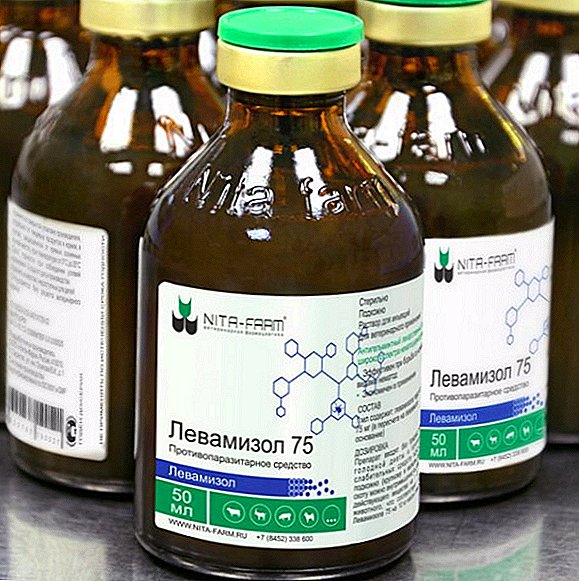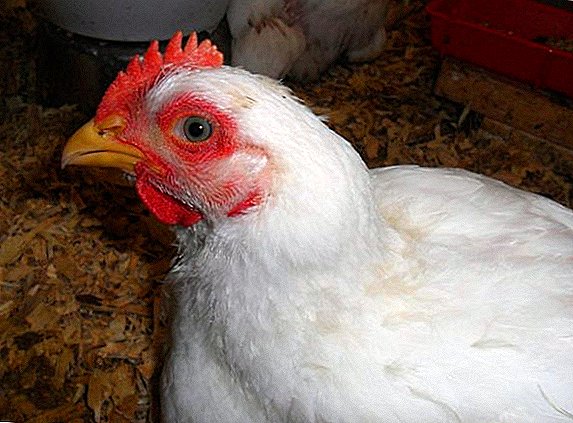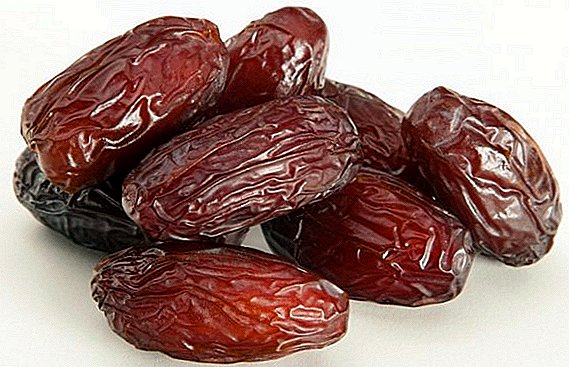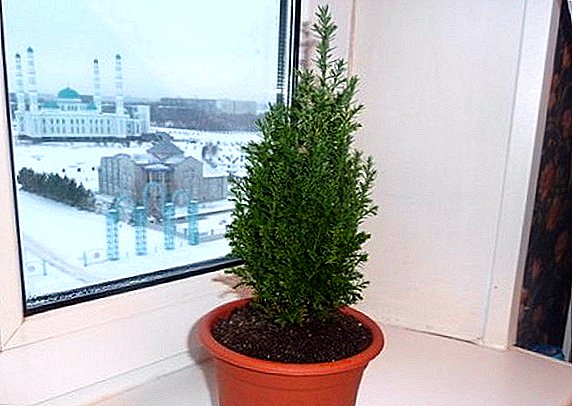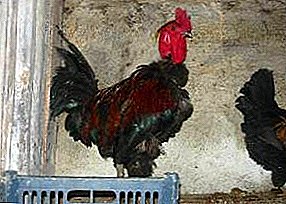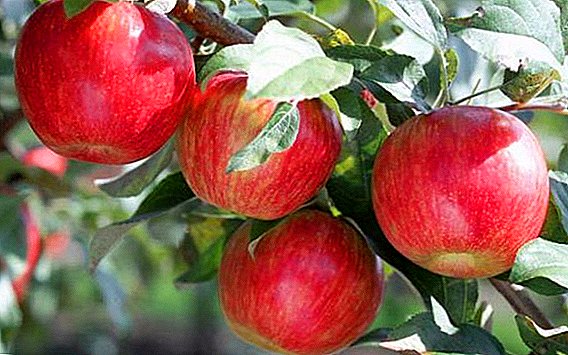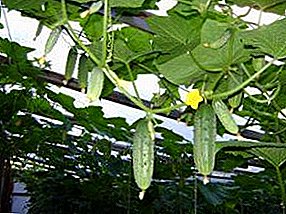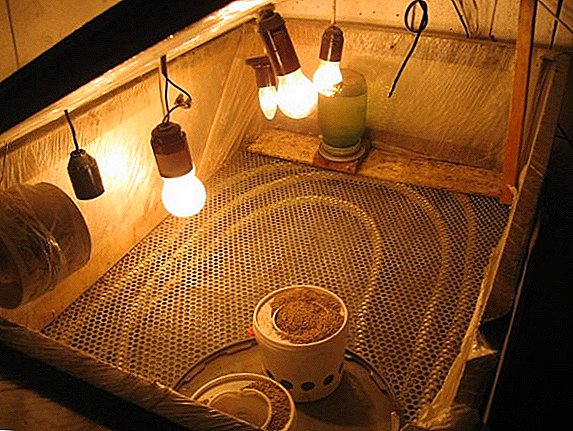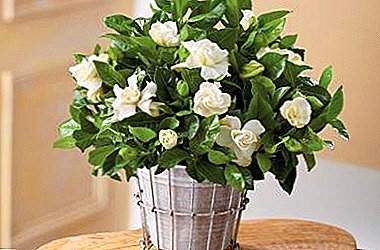
Gardenia is a fairly delicate plant, care for which sometimes has difficulty. Let's talk about the most common diseases of this ornamental shrub and their treatment.
Our article will tell you why flower buds often fall off, for what reason a plant can dry and what pests affect it.
Consider all the possible difficulties in growing and what preventive measures are necessary to take, so that the flower will stay blooming for a long time and please us with its beauty.
Growing difficulties
The problem that often growers - gardenia does not bloom. The reasons are:
- Incorrect conditions of detention, in particular, non-compliance with the temperature regime. To gardenia could lay buds, during the budding period it is extremely important to lower the temperature in the room by several marks. The optimal value is +18 degrees.
- Also, the buds may not be formed due to the fact that the top dressing contains an excess amount of nitrogen, which contributes exclusively to the collection of green mass, leaving no forces for the plant to bookmark future flowers.
- Alkaline or neutral soil often causes a lack of flowering. The soil should be with acid reaction. You need to constantly maintain it by acidifying the water for irrigation.
- If pruning was done incorrectly, flowering may also not occur.
- If the plant does not receive enough iron from the soil, its foliage may turn yellow, and the green veins will be clearly visible.
- Because of watering too hard or cold water, gardenia leaves may turn yellow and fade.
Common diseases and pests
What if the flower is dry?
 Drying leaves at gardenia happens quite often, if it happens in small quantities, then there is no sense to sound the alarm - this is a natural process. If the phenomenon has become widespread, then you need to find out the reasons. They may be as follows:
Drying leaves at gardenia happens quite often, if it happens in small quantities, then there is no sense to sound the alarm - this is a natural process. If the phenomenon has become widespread, then you need to find out the reasons. They may be as follows:
- Over-watering. If the soil is wetted the leaves begin to rot and dry. In this case, you need to cut off all damaged leaves, stop watering and transplant gardenia in a new pot, after checking the condition of the root system, if it is partially damaged, the affected parts also need to be removed.
- Hypothermia and drafts. A sharp jump in temperature leads to blackening and drying of the leaves of gardenia. For resuscitation of a plant, it is necessary to restore a comfortable temperature regime of +18 +24 degrees.
White aphids on the plant
A harmful insect that infects the leaves and stems of gardenias is one of the reasons why a plant drops buds. The pest appears most often together with a new flower brought from the store. Infection requires urgent action, as the insect multiplies very quickly.
First of all, white aphid damages young shoots, but if the infection has spread, then all other parts of the gardenia will also suffer. The life of the insect leads to the fact that the flower stops developing, and the leaves begin to dry out.
If the lesion is still only at the initial stage, it is possible to remove the aphids mechanically, carefully wiping the stems and leaves with a damp cloth, if the infection has spread through the hive, then you need to resort to using system insecticides.
Why do buds fall off?
The causes of the disease can be:
- Air too dry. Humidity is very important for sustainable and productive hydrangea bud formation. So that the plant does not remain without buds, it is necessary to take measures, for example, to put the pot in a pan with wet expanded clay. The pallet should be much wider than the pot so that the moisture evaporated by the claydite is transferred to the foliage. Also, gardenia must often be sprayed, while trying not to fall on the buds and petals of flowers that have already opened. A water tank, an aquarium or a fountain can be placed near the plant.
- Draft. Feeling a cold breath on himself, gardenia instantly drops buds. To remedy the situation you need to move the flower in a place protected from drafts.
- Temperature changes. We can not allow too sharp fluctuations in temperature, the plant is under stress and gets rid of the buds.
- Turning the pot relative to the light source. You can not twist the plant, which scored the buds.
- Late transplant. Just brought from the store gardenia, as a rule, actively picks up the buds and blooms. It is not necessary to immediately transplant it into a new pot, from such manipulations it will throw off the inflorescents that have begun to form.
White spots
 If white spots of irregular shape appear on gardenias, this indicates chlorosis. A concomitant symptom is the lightening of the leaf plate in such a way that the veins remain green.
If white spots of irregular shape appear on gardenias, this indicates chlorosis. A concomitant symptom is the lightening of the leaf plate in such a way that the veins remain green.
The cause of chlorosis is watering with hard water.which reduces the acidity of the soil and deprives the gardenia of the iron it needs.
To cope with the disease will help the organization of irrigation regime with the use of soft water. To reanimate gardenia affected by chlorosis, you need to water it with a solution containing iron chelate.
How to deal with spider mite?
This is the most common and dangerous pest for gardenia. At risk, above all, plants that are in a dry and very warm room. If the affected shoots are found, it is better to get rid of them immediately., and the flower process systemic insecticides. A week later, re-process.
Preventive measures
Important! The main preventive measure is the implementation of all recommendations for the care of the plant.
- To avoid chlorosis, gardenia should be watered with soft water. You can soften it by adding a couple of drops of lemon juice.
- To prevent spider mites, you should regularly humidify the air. You can spray the space around the pot of a fine sprayer, wipe the leaves with a damp cloth and conduct preventive examinations for the presence of a pest.
- Shrubs need to be timely fed. A weakened diet is the most susceptible to disease.
Preventive measures and timely reaction to the symptoms of the plant disease will help to preserve the health and high ornamental flowering of the unique gardenia.


